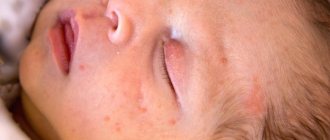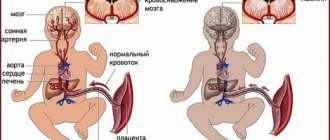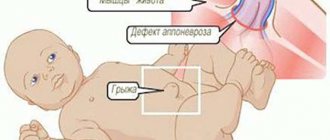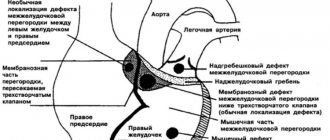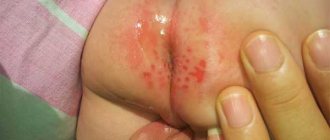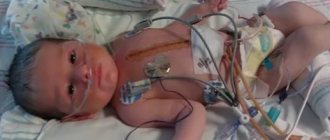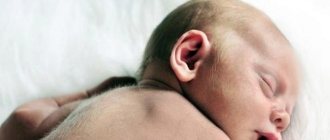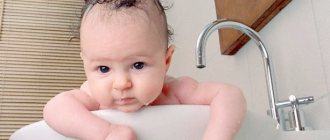With the birth of a baby, young parents have a lot of worries and troubles. Every pimple on a baby’s body can cause suspicion and a desire to urgently consult a doctor. But it is worth knowing that there are physiological characteristics of the body to respond to the world around it. Thus, white spots on the nose of a newborn can greatly frighten the family. But in vain. They occur in 80% of babies in the first weeks of life. Where do they come from? Is it possible to avoid their appearance so that the toddler’s skin remains perfect? We'll look at all this in the article.
Should we sound the alarm?
The exciting period of childbirth and the first days in the hospital have passed, and finally the young family finds themselves at home, without the supervision of doctors and experienced nurses. Monitoring the health of the baby is perhaps the most important responsibility of mom and dad, not counting feeding, hygiene and other mandatory processes and procedures.
It is worth noting that rashes on a baby’s skin can often indicate the onset of serious illnesses or allergic reactions. But there are also those that should not bother you. One of them is white spots on the newborn's nose or near the eyes. They are physiological, natural in nature. The skin of the baby, who has been in amniotic fluid for all nine months, simply adapts to the world around him.
Physiology
If an infant sniffles through his nose, but there is no snot, while the baby eats well, sleeps and gains weight, then the cause may be an imperfection in the structure of the respiratory organs, which is normal for this age.
There is no need to panic if wheezing or wheezing appears in the nose of a newborn; this most often happens with a physiological runny nose in infants, when the nasal mucosa adapts to the outside world and learns to react normally to inhaled air with all its impurities.
This condition is considered normal during the first 2 or 3 months of life and does not require special treatment. At this time, it is important to organize proper care for the baby’s nasal cavity - promptly clean the nose from accumulations of mucus.
What other reasons lead to the fact that a baby sniffles in his sleep, but still feels good:
- Anatomical features of the nasopharynx - the nasal passages at birth are very narrow and short, and the inferior turbinates are quite thick, this explains the noise when inhaling air through the nose. Over the course of several months, the nasal passages continue to develop, and the baby gradually stops wheezing in his sleep.
- Abundant formation of crusts in the baby's nasal cavity - this occurs with low air humidity in the room during the heating season. If the mucous membrane dries out, its protective function is disrupted, the mucus thickens, and crusts form that close the lumen of the nasal passages. This increases the risk of microbial penetration and the development of an infectious disease of the respiratory system. Therefore, it is important to give the baby water to drink and maintain an optimal microclimate in the room through ventilation, wet cleaning and using a humidifier.
- Frequent regurgitation - this happens if the baby is always in a horizontal position during feeding and after it, and the contents from the stomach enter the posterior sections of the nasal passages. This is where whistling or wheezing sounds appear when breathing. For prevention, after a few minutes from the start of each feeding, the baby should be held in a “column” until a burp appears, and then continue feeding.
- Teething - an increase in blood flow in the gums is accompanied by a similar process in the nasal cavity in connection with the general blood supply system, which leads to nasal congestion and wheezing when the baby breathes.
You may also be interested in: What to do with nasal congestion
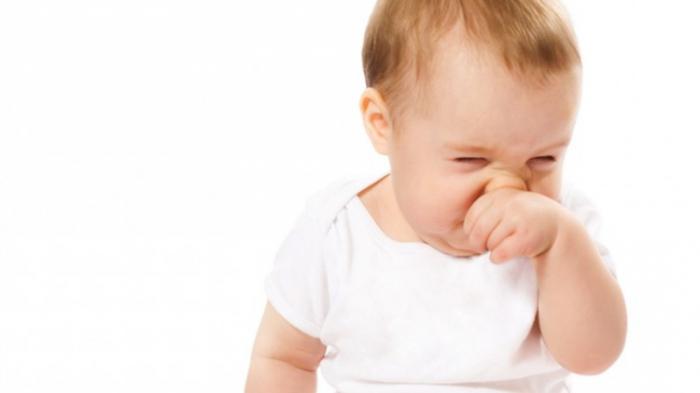
White dots on the nose of a newborn: when do they go away, the reasons for their appearance
White dots on the baby’s face can be noticed both immediately after birth and a week later. Doctors explain this by saying that in the first case, the cause is an excess of tiny bits of mother’s hormones in the body.
The next reason is blockage of the sebaceous glands. And then milia appear on the baby’s skin. They are several pimples that resemble small pearls. They pass within a month.
There is no need to worry about the appearance of white pimples on your baby's skin. They disappear on their own without leaving any scars or scars. The only thing is, try to make sure not to injure the pimples and cut your child’s nails on time. It is very easy to get an infection when the skin is damaged, which can lead to serious illnesses.
How to distinguish a rash from other skin problems?
Young, inexperienced mothers, seeing unaesthetic bumps on their baby’s face, panic, deciding that this is a sign of a disease. But that's not true.
Milia in newborns is a bit similar to some skin problems, so it's important to know how to differentiate between the two. And, if a hormonal rash is not dangerous, then other pathologies with similar symptoms require consulting a doctor.
Allergic rashes
The distinctive features of an allergic rash include:
- itching and flaking of the skin;
- red acne;
- distribution throughout the body;
- development of other allergy symptoms – watery eyes, sneezing.
If these signs occur, you should contact your pediatrician.
Erythema
In pediatrics, the concept of “erythema” in newborns is separately distinguished - redness of the baby’s skin as a result of its adaptation to extrauterine conditions. Skin blood vessels dilate.
The condition is accompanied by specific symptoms:
- red-pink skin color;
- the appearance of a yellow-gray rash on the face, head, and torso.
Such changes are recorded in the first days of a baby’s life and do not cause discomfort.
Prickly heat
It is a bright pink acne that appears as a result of excessive sweating in an infant. They form in those areas of the body that are deprived of normal air exchange.
In babies, thermoregulation processes are underdeveloped, and the excretory system is also immature. This provokes the development of prickly heat.
Mothers should change their baby's diapers and diapers more often, allowing the baby to stay at home without clothes for some time.
Acne in infants
These pimples appear against the background of milia, if the phenomenon is accompanied by a bacterial infection. Visually, acne appears as swollen blackheads with yellow tips.
Acne is localized on the baby's face, in the folds of the skin, and on the thighs. The condition does not threaten the health of the baby, but requires certain treatment.
Parents need to bathe their child more often and wipe their face with chamomile infusion. Medicines are also used.
Thrush
Candidal stomatitis develops after the proliferation of candida fungi, which are present in the body of every person. In infants, they begin to replicate against the background of a weakened immune status, when parents do not follow hygiene rules.
Thrush is manifested by the appearance of white sores and spots on the gums, tongue, palate, and inner surface of the cheeks. The condition is accompanied by a slight inflammatory process, which is accompanied by itching and discomfort.
Candidiasis requires therapy under the supervision of a pediatrician. Doctors prescribe the use of antifungals and other drugs.
If left untreated, the infectious process spreads throughout the digestive system, causing serious illness.
Vesiculopustulosis
An inflammatory disease that develops as a result of the influence of fungi, staphylococci and other pathogenic microorganisms. More often diagnosed in premature babies.
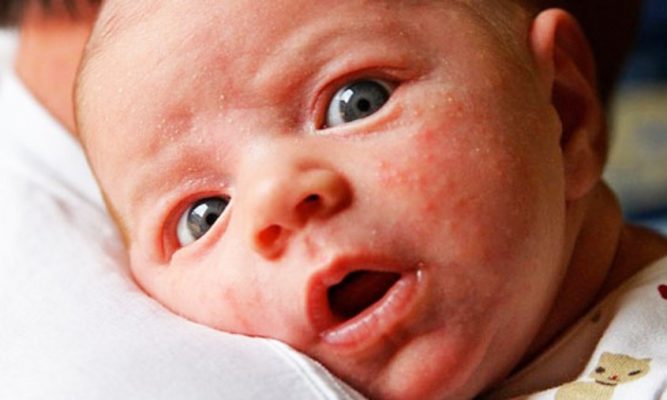
In infants, the disease is detected when:
- improper skin care;
- the presence of infectious diseases in the mother;
- failure to comply with sanitary and hygienic requirements in the maternity hospital.
The pathology is accompanied by the appearance of a pea-shaped rash on the head, face, and torso. Bubbles and pustules form at the exit points of the sweat glands. At the same time, children become restless and refuse to eat.
The condition requires correct therapy. Doctors prescribe the local use of antiseptic drugs, and, if necessary, use antibacterial agents and detoxification medications.
Getting to know the outside world
Even in the maternity hospital, you can hear the question from parents: “What are those white dots on the nose of a newborn?” The answer to it is quite simple, these are ordinary milia, which are found in almost all babies that have just been born.
As a rule, they appear 1-4 days after birth. They are a collection of small white dots the size of the eye of a needle. Milia is an accumulation of secretions. Simply put, blockage of the sebaceous glands and, as a result, ducts. Remember, all the baby’s systems improve and actively adapt to new living conditions during the first month. Pimples should not be squeezed out, smeared with alcohol solutions, brilliant green, iodine, or applied with Vishnevsky ointment and other means that remove suppuration.
All that is required of parents is to ignore the white spots on the nose of the newborn. No matter how funny it may sound, only this method will help them pass faster.
There are situations that should alert the visiting nurse:
- the dots increase in size and spread throughout the body;
- do not go away after a month.
This may be an individual feature of the baby, but it is still better to consult a dermatologist.
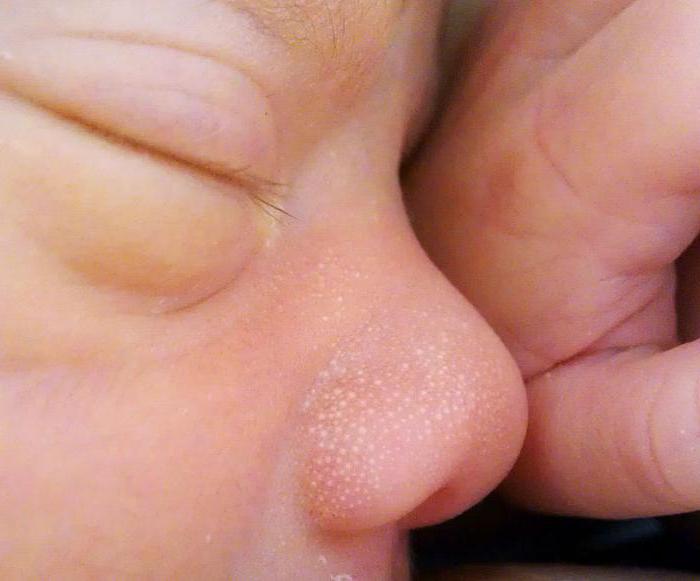
Medical problems
The remaining 10% of cases of a newborn snorting are associated with specific diseases or developmental defects. To eliminate them, you need to contact a pediatrician or ENT doctor who will carefully examine the baby’s nose. In some cases, the help of a surgeon may be required. Grunting sounds can be caused by:
- Mechanical damage. The slightest injury to the thinnest mucous membrane as a result of careless medical manipulation or illiterate cleaning of the nose leads to swelling, narrowing the nasal passages.
- Entry of a foreign body. Suspicion may arise from sudden congestion that does not go away after instillation of vasoconstrictor drugs. In this case, the newborn may not only grunt and rub his nose, but also cough.
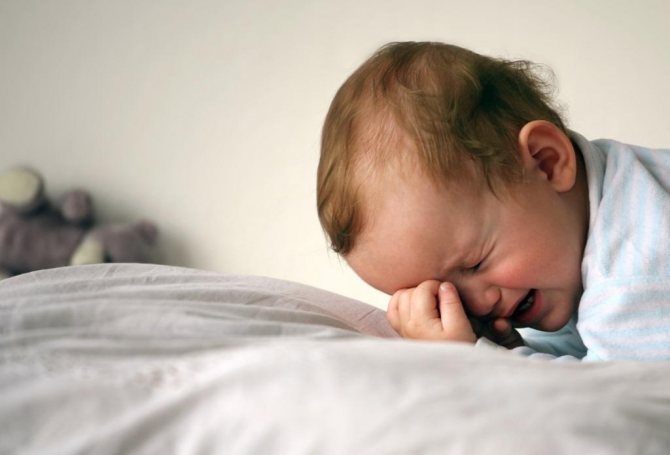
- Deviation of the nasal septum. A natural deformity that is often diagnosed in children. In this situation, chronic nasal congestion is never accompanied by the appearance of snot. For severe curvatures, surgical correction is indicated.
- Infection. A large group of respiratory viruses and bacteria cause a common runny nose, which is easily recognized by the presence of nasal discharge.
- Congenital defects. If serious abnormalities in newborns are detected immediately after birth, minor deformities may remain unrecognized for a long time. These include pathologies of the cartilage tissue of the bronchi, compression of the trachea by the aorta, and malformations of the lungs. One of these birth defects, choanal atresia, is characterized by fusion of the nasal passages. Warning signs include asymmetry of the nasolabial triangle, noisy breathing, and a high palate.
- Allergy. If your baby starts snorting and sneezing at the same time, his eyes turn red or a rash appears, you should think about the presence of any allergens in his environment. Most often, such manifestations result from a reaction to new complementary foods. Discard the foods that were introduced into your baby’s diet and consult an allergist.
WHO studies have confirmed the fact that almost all newborns diagnosed with allergic rhinitis have intestinal dysbiosis. Therefore, along with treating unpleasant symptoms, it is necessary to normalize the intestinal microflora.
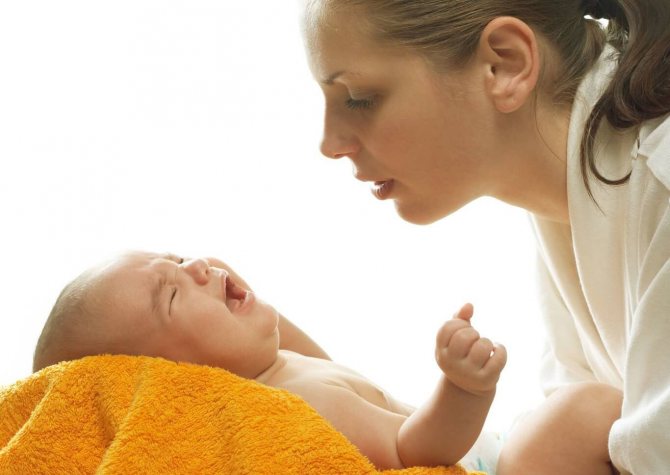
- Reaction to temperature change. Some children react with grunting sounds when leaving a warm room into the cold.
What can be done to make the points pass faster?
“Why does a newborn have white spots on his nose?” - This is perhaps the most popular question from young parents. The main reason is a physiological process that occurs in every second child. By the age of two months, the baby’s skin will adapt to external environmental conditions and will be ideal, smooth, and without blemishes. The main thing during this period is not to squeeze pimples under any circumstances.
If, nevertheless, the white dots on the baby’s nose really bother you, you can suggest the following methods, which are unlikely to help, but certainly will not harm the child:
- Wipe the baby's nose after bathing with a weak solution of string or chamomile. The herb should be brewed according to the instructions on the package. Water should only be boiled. It is better to use a sterile bandage or sponge.
- Some doctors recommend bathing the baby in water with the addition of potassium permanganate. But remember, the color of the water should have a slightly pink tint. Excess of this solution can cause severe burns and allergic reactions on the baby’s delicate skin.
- Do not forget about basic hygiene rules; wash your child several times a day with boiled water.
Remember, white dots on a newborn’s nose, the photo of which is presented below, do not require any action at all.
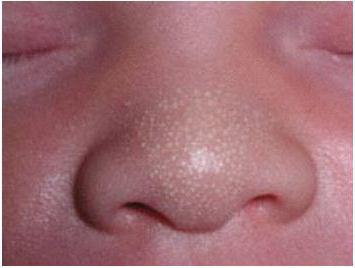
There is no need to treat them. Usually milia go away by the time the baby is two months old.
Main reasons for asymmetry
The main causes of facial asymmetry in newborns include:
We recommend reading: Torticollis pillow for a newborn
- uneven development of the bones of the facial skull caused by intrauterine trauma. In a baby, asymmetry can be caused by incorrect presentation, entanglement in the umbilical cord, etc.;
- muscular dystonia, that is, a change in the tone of facial muscles;
- damage to the facial nerve that was caused by compression with obstetric forceps;
- passage of the birth canal in a breech or transverse presentation. In this case, during childbirth, the head is flattened too much, and the lower jaw is subject to deformation;
- fractures of the temporal bone during the passage of the birth canal;
- epilepsy. This disease often causes facial asymmetry in newborns. At the same time, diagnosing epilepsy is quite difficult: for this you need to find an experienced specialist.
Often the cause of asymmetry is a disease such as torticollis. It is not difficult to notice this pathology and distinguish it from others: with torticollis, the entire body of the baby is bent in one direction. Unfortunately, if treatment for torticollis is not started in time, the muscles will become fixed in a deformed state, that is, the location of the facial tissues will change. As a result, one eye remains slightly dilated, the corners of the mouth shift, and the mouth itself becomes distorted.
Below, the reasons why facial asymmetry occurs in a newborn will be discussed in more detail.
Epilepsy of newborns
Epilepsy in newborns, which can cause the development of facial asymmetry, is quite difficult to diagnose. After all, the baby is not yet able to communicate about its condition, and a convulsive seizure can easily be confused with uncoordinated movements characteristic of any infant.
Seizures in a child can develop due to local brain damage during childbirth, hemorrhages and even strokes. Epilepsy also affects the symmetry of a child’s face. For example, you may notice that one nasolabial fold is smoother than the other, one eye opens wider than the other, etc.
Torticollis: manifestations and treatment
In children, torticollis, which is a congenital pathology of soft and bone tissues, usually appears two to three weeks after birth. Torticollis occurs in approximately 2% of children, and girls suffer from this disease much more often than boys.
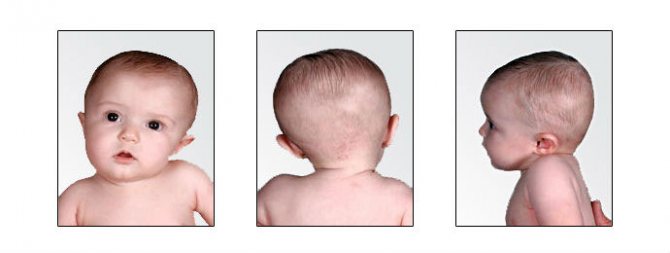
The main cause of torticollis is a pathology of the sternocleidomastoid muscle, which for some reason loses its elasticity.
During childbirth, the sternocleidomastoid muscle is injured during the passage of the birth canal, as a result of which a scar is formed in place of the muscle tissue, holding the baby's head in a certain position.
Pathology of the sternocleidomastoid muscle can occur due to intrauterine infection or due to the fact that the child is awkwardly positioned in the uterus. Torticollis can also develop due to entanglement in the umbilical cord or during breech presentation.
Torticollis can form due to the fact that parents hang toys on only one side of the crib. The baby is forced to constantly keep his head in one position, as a result of which the muscles of the neck and face are deformed.
Birth injuries
Unfortunately, birth injuries often become the reason that forces young parents to treat their baby for a long time after he is born.
The causes of birth trauma can be not only the inept actions of midwives, but also a number of other factors, for example, too narrow a pelvis, illness of the pregnant woman, post-term pregnancy. Also, birth injuries are caused by breech presentation of the fetus and its too large size, intrauterine hypoxia, abnormal labor (too fast or too long labor), etc.
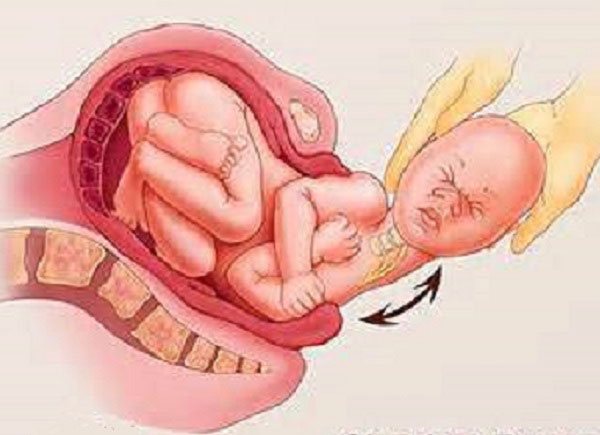
The reason why facial asymmetry develops in a newborn is usually the incorrect use of obstetric instruments, for example, forceps, a vacuum extractor and others.
The result of birth trauma can be damage to the facial nerves, which causes asymmetry. This is a serious complication that can remain with the child for a very long time, so you should immediately contact a doctor with such a problem.
Strictly prohibited
Having discovered white dots on the face of a newborn, parents need to know what is strictly forbidden to do:
- Wipe with tinctures containing alcohol. Such methods will lead to burns to the child's skin.
- Avoid treatment with brilliant green, iodine, or fucorcin.
- Fat cream, oil, lotions are also not helpful in this case. They will only “clog” the pores, and pimples will go away more slowly.
- Drying your skin with powders is also not a good idea.
- Take medications (antibiotics, antihistamines, sorbents). All medications can only be prescribed by a doctor.
- Squeeze pimples, try in every possible way to remove them from the baby’s face (use peeling, laser intervention, etc.).
There are cases where treatment of common milia caused serious skin damage in children. Remember, before using any of the above methods, you must consult your pediatrician and dermatologist.

Preventive measures, will they help?
Many parents are interested in whether there are any preventive measures to prevent the appearance of pimples in a newborn? In 90% of cases they simply do not exist, since these are processes that do not depend on humans. In a similar way, the baby’s skin adapts to new conditions. But to prevent miles from developing into something more, you need to follow the following rules:
- If the child is breastfed, the mother must follow a strict diet. There is no need to eat chocolate, tomatoes and other prohibited foods from the first days of your baby’s birth.
- Is the child an artificial person? Then carefully and correctly select the mixture.
- Ask your doctor or health visitor how best to care for your baby's skin.
- When washing children's clothes, use only special powders or soap.
All this will help you avoid allergic rashes.
When should you see a doctor?
White dots on a baby's nose are a fairly popular phenomenon. But there are cases when, if they are detected, you must immediately consult a doctor:
- In addition to the dots that appeared on his face, the baby’s temperature rose sharply above 38.0 °C. Remember, in this case, no antipyretics should be given until consultation and the doctor’s arrival.
- Areas of skin appear red and inflamed.
- When touching pimples, the child reacts by crying, clearly making it clear that they are painful.
- Pimples contain pus or ichor inside.
- White dots are large in size.
- When acne appears, the child’s general condition changes (eats poorly, sleeps poorly, cries often, gets nervous).
In these cases, the appearance of white dots may indicate the onset of serious illnesses, so you cannot do without consulting a doctor.
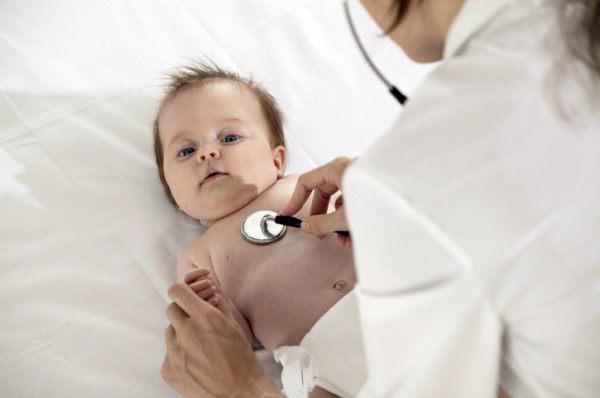
It's worth remembering
As a conclusion, I would like to remind you once again that milia are typical for 80% of newborns. They occur due to blockage of the sebaceous glands. White papules are small in size, most often localized on the nose, but can also be on the baby’s cheeks, forehead, and chin. It may appear on one or more sides of the face. The pimples do not contain pus inside, so they do not pose a danger to the baby's body. As a rule, they go away on their own, without requiring any medical intervention.
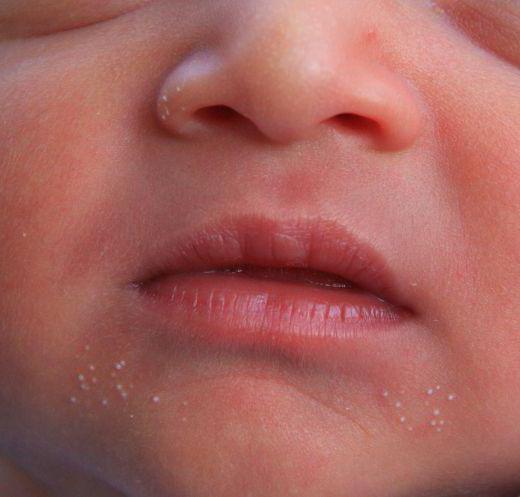
White spots in a newborn, if they are caused by physiological characteristics of the body, do not need to be treated. In special cases, when the skin cannot cope on its own, the doctor may prescribe the use of ointments containing panthenol. But this happens quite rarely.

